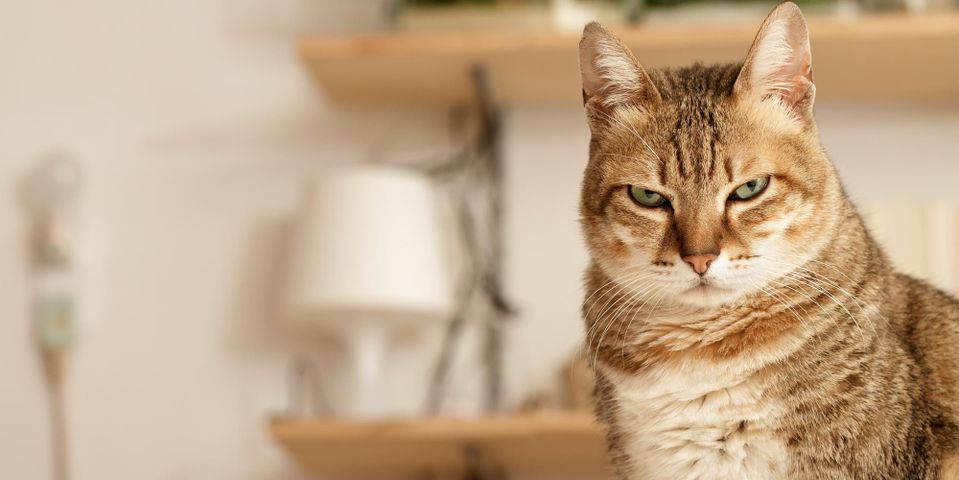
While cats may not be able to speak like humans, they’re still communicative. Often, your feline friend will let you know what they want by meowing. In other cases, they may offer clues about their health and wellness through body language. By keeping a close eye on your cat’s movements, you may find it easier to determine when your pet is stressed, when they have a need that’s not being met, and when it’s time to visit a veterinarian. To understand your feline’s feelings, use the guide below.
4 Common Types of Cat Body Language
1. Tails
A raised tail that’s curved at the tip is usually the sign of a happy or excited kitty. But if the tail is straight up and fluffy, it’s a sign that your companion is angry or in a predatory mood. By contrast, a tail caught between the legs may mean that your cat is anxious or threatened. In these cases, try to figure out what’s triggering this reaction. Keep in mind that cats are often upset by seemingly innocuous objects, such as bananas. If this is what’s provoking them, simply put the item out of sight. If the anxious body language continues, talk to a veterinarian about how to address the behavior.
2. Ears
Next time you see your cat’s ears are perked up, look where they’re pointing. The direction of the ears usually shows where your pet is focusing their attention. When the ears lie flat against the head, your cat may be feeling defensive or afraid. If you notice that your cat is twitching frequently and scratching, they may be irritated by fleas. Visit a veterinarian for prompt treatment to eliminate the infestation and give your pet comfort.
3. Whiskers
 Whiskers are primarily used to help cats get a sense of their surroundings. However, these hairs can also reveal what’s happening in your pet’s head. For instance, pushed-back whiskers are a sign that your cat is feeling aggressive and may even be ready to fight. If the whiskers are facing forward, your companion is likely just feeling content and curious.
Whiskers are primarily used to help cats get a sense of their surroundings. However, these hairs can also reveal what’s happening in your pet’s head. For instance, pushed-back whiskers are a sign that your cat is feeling aggressive and may even be ready to fight. If the whiskers are facing forward, your companion is likely just feeling content and curious.
4. Eyes
When your feline’s eyes are relaxed or blinking slowly, they’re likely in a good mood. Dilated pupils can signify that your pet is afraid or surprised. Look for solutions to help calm them, such as by soothing them with gentle pats or distracting them with toys. If the pupils constrict, your cat may be aggravated. It’s safest to remove the irritant and let your cat be.
Serving the Columbia, MO, area for more than a decade, Pet Center Ltd. is equipped to address both minor and major health issues in cats, including anxiety. Through one-on-one care, this provider will recommend safe and effective solutions to improve your four-legged friend’s well-being, such as pet medication. Visit this clinic online to learn more about their capabilities or call (573) 445-3000 to schedule a convenient appointment with a friendly veterinarian.
About the Business
Have a question? Ask the experts!
Send your question

